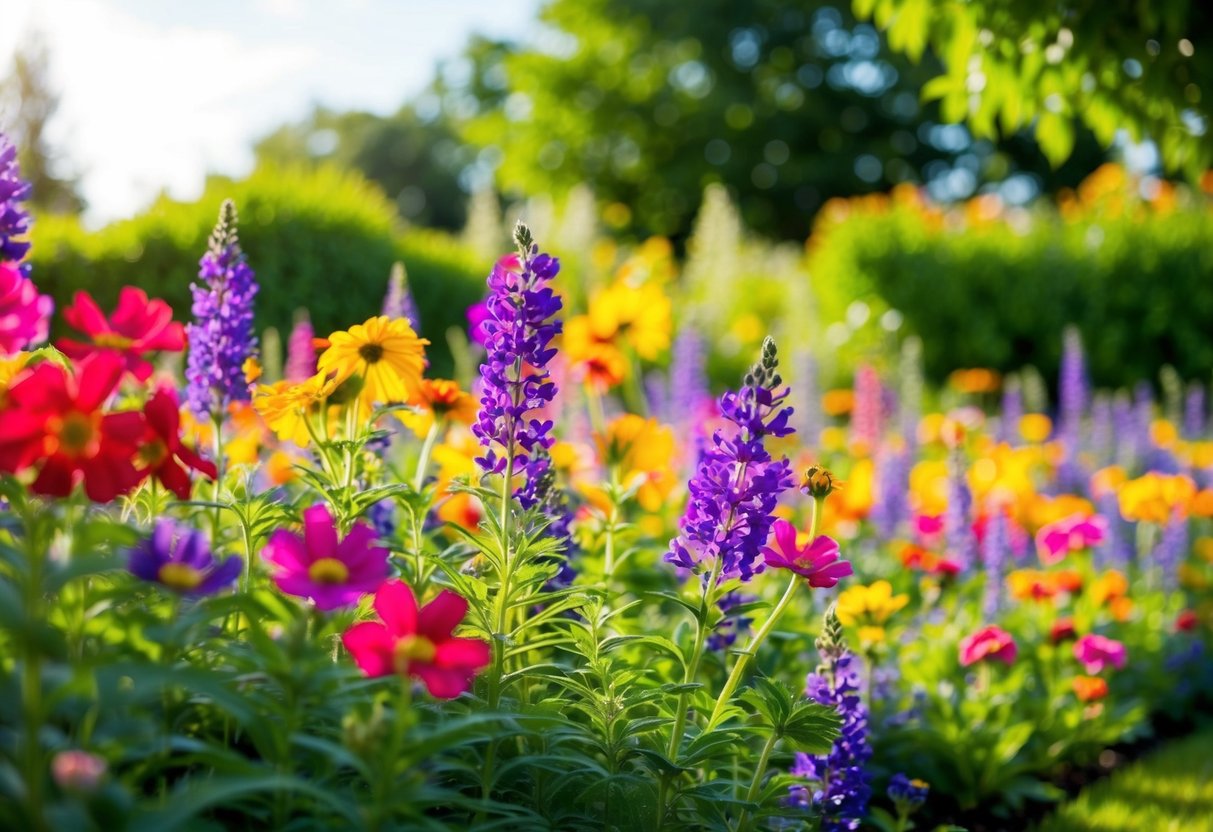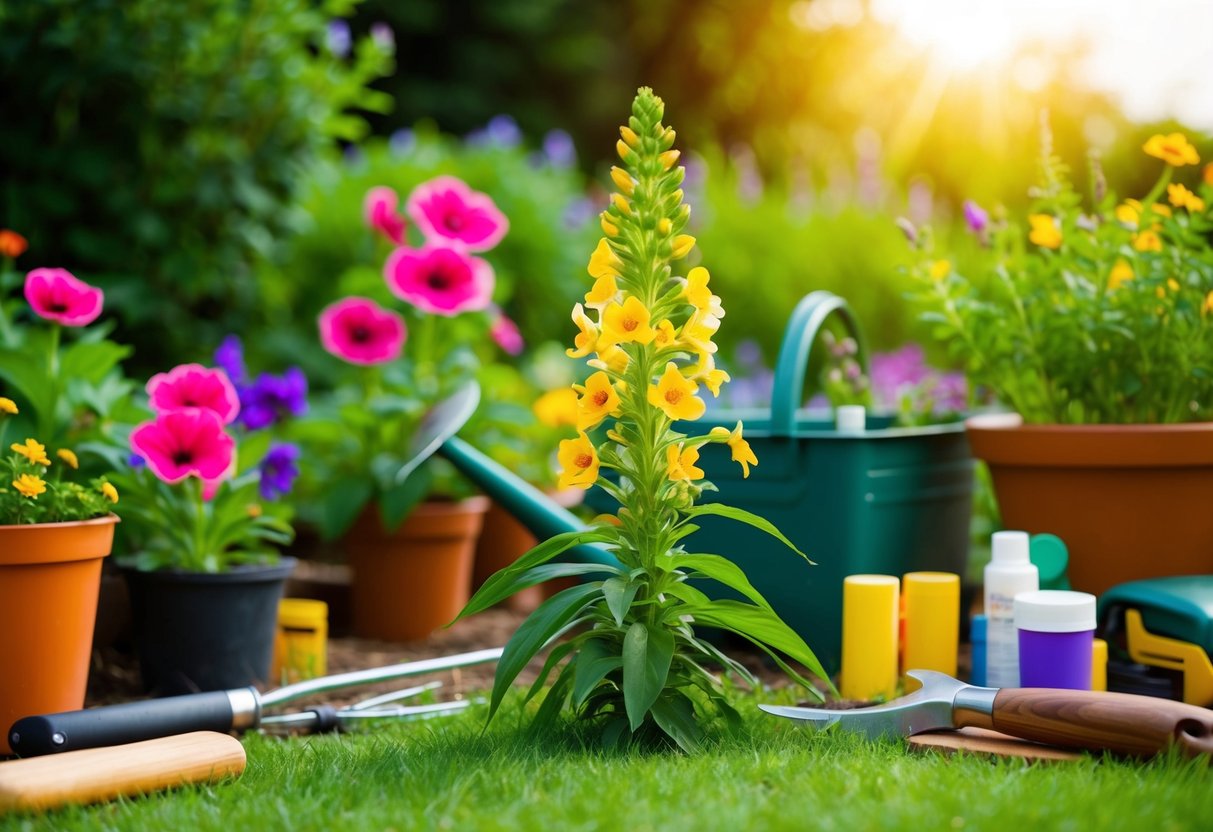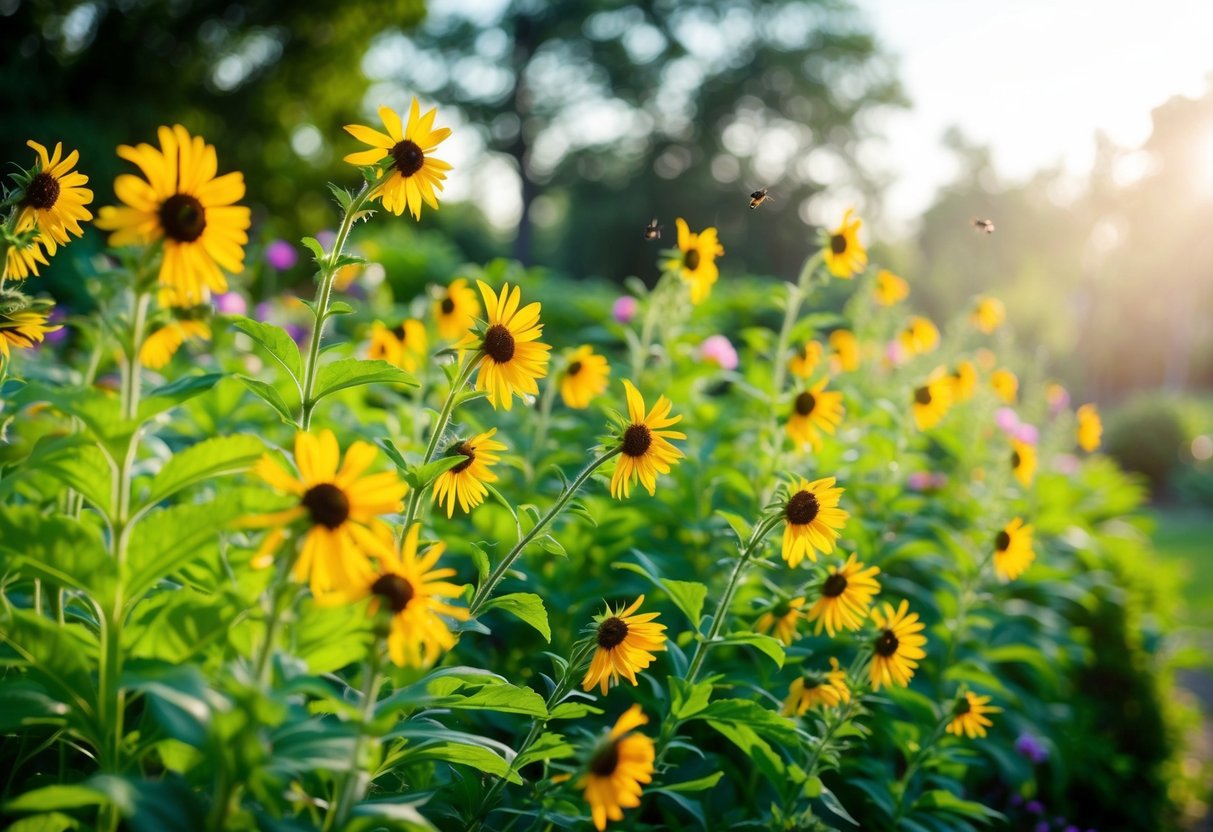What is the Fastest Growing Perennial Flower? Discover the Top Picks!
When you’re looking to add some vibrant life to your garden, choosing perennial flowers that grow quickly is a smart choice. These plants not only flourish year after year but also spread their beauty in a short time. Catmint stands out as an excellent fast-growing perennial that adapts easily to different soil types and conditions. Its fragrant, gray-green foliage and attractive blooms make it a favorite for many gardeners.

Aside from catmint, there are other options to consider for a quick and colorful garden transformation. For example, black-eyed Susans and purple coneflowers are popular choices for their bright blooms and hardiness. These flowers not only grow quickly but also attract pollinators, bringing a lively buzz to your garden.
Adding fast-growing perennials can provide instant impact while maintaining a low-maintenance garden. You’ll enjoy watching your garden come to life as these plants fill spaces with vibrant colors. The beauty of perennial flowers is that they save you time and energy, returning and growing fuller with each passing year.
Understanding Perennials

Perennials shine in gardens, coming back year after year with little effort. They offer unique benefits over annuals and thrive under specific conditions depending on hardiness zones.
Defining Perennials vs. Annuals
Perennials are plants that live for more than two years. They grow and bloom over spring and summer, die back every autumn and winter, then return in spring. This cycle continues, offering consistency in your garden.
In contrast, annuals complete their life cycle in one growing season. They need replanting every year. While they may bloom more profusely for a single season, they don’t offer long-term garden structure like perennials.
Choosing perennials means less planting work each year. It’s a great way to establish stable, low-maintenance gardens.
Benefits of Choosing Perennials
Perennials give your garden lasting beauty. After planting, they return each year, making them cost-effective over time. You save time and money because they don’t need annual replanting.
They also bring ecological benefits. Many attract beneficial insects like bees and butterflies, promoting a healthy garden environment. You can mix them with a few annuals to provide color variation.
Additionally, their roots grow deeper than those of annuals. This can improve soil structure, increase water retention, and reduce erosion over the years.
The Role of Hardiness Zones
The USDA hardiness zones guide you on where certain plants thrive. These zones help you understand the climate your perennials can handle. By choosing hardy perennials suitable for your zone, you ensure better growth and survival.
Each zone is defined by the average minimum winter temperature. Knowing your zone helps you pick perennials like coneflowers and rudbeckia that will thrive in your garden. For example, coneflowers suit zones 3 to 10, making them versatile choices.
Understanding these zones can help you select plants that not only survive but thrive, enhancing the resilience and vibrancy of your garden.
Top Fast-Growing Perennial Flowers

Adding fast-growing perennials to your garden is a great way to enjoy colorful blooms without waiting too long. Here are some of the most popular flowers that grow quickly and fill your garden with beauty.
Coneflower (Echinacea)
Coneflowers, or Echinacea, are known for their vibrant and daisy-like blooms. These hardy plants thrive in full sun and are drought-tolerant, making them easy to care for. You can find them in shades of pink, purples, and even white. Their blooms attract butterflies and bees, which is perfect for pollinator gardens.
Coneflowers can grow up to 4 feet tall. While they prefer well-drained soil, they are versatile and can survive in poor soil as well. To encourage growth, water them occasionally and deadhead spent blooms. With minimal effort, you can enjoy their beauty year after year.
Daylily (Hemerocallis spp)
Daylilies, part of the Hemerocallis species, are another excellent choice for a fast-growing perennial. Available in an array of colors from yellow and orange to deep reds, they add a splash of color to any garden. They are resilient and can grow in various climates and soil types.
These flowers prefer full or partial sunlight and bloom throughout the summer. The name “daylily” comes from each flower’s tendency to last for just one day. However, they bloom in succession, so your garden remains colorful for weeks. They’re also deer resistant, adding to their appeal for many gardeners.
Rudbeckia (Black-Eyed Susan)
Rudbeckia, commonly known as Black-Eyed Susan, is a staple in many gardens thanks to its bright yellow petals and dark centers. These flowers can grow quickly and reach heights of up to 3 feet. They’re great for adding a pop of color and creating a cheerful look in your garden.
Rudbeckias are drought-tolerant and prefer full sun. They attract pollinators like bees and butterflies while deter common pests due to their tough leaves. Rudbeckias exhibit a stunning display in mid to late summer. For the best results, make sure they are planted in well-drained soil, and water them when the ground starts to dry.
Sage (Salvia spp)
Sage, or Salvia, is praised for its fragrant leaves and long-lasting blooms. With colors ranging from vibrant blues and purples to reds and pinks, there’s a Sage variety to suit any garden. These plants are known for attracting hummingbirds and other pollinators.
Sage typically prefers full sun and well-drained soil. They can grow up to 3 feet tall and have a bushy appearance, which aids in filling garden spaces quickly. A bit of pruning can encourage more blooms and a fuller plant. Once established, Sage is quite hardy, requiring minimal maintenance to thrive.
By choosing any of these fast-growing perennials, you can bring vibrancy and life to your garden quickly and easily.
Planting and Care Tips

When planting fast-growing perennials, consider their soil, sunlight, and watering needs to ensure healthy growth. Knowing the right conditions can make your garden flourish with minimal effort.
Soil Preferences for Perennials
Fast-growing perennials generally prefer well-drained soil to thrive. This type of soil prevents water from pooling around the roots, which can cause rot. Some perennials, like catmint, tolerate average to poor soil conditions and can adapt easily. Adding organic matter, like compost, improves fertility and drainage. Make sure the pH level is suitable, typically between 5 and 8. This balance supports nutrient uptake.
Before planting, loosen the soil to improve aeration. This encourages root growth, allowing plants to establish more swiftly.
Sunlight Requirements
Most fast-growing perennials thrive in full sun, receiving at least six hours of direct sunlight a day. Rudbeckia and other sun-loving plants bloom best under these conditions. Some varieties can adapt to part shade, receiving filtered sunlight. This flexibility makes them great for gardens with varying light conditions.
Place plants in areas that match their sunlight needs for optimal growth. Evaluating your garden’s light conditions before planting ensures your perennials get the energy they need to produce vibrant blooms. Observing sunlight patterns helps in selecting the best spot for planting.
Watering and Maintenance Needs
While many perennials, like drought-tolerant varieties, need minimal watering, it’s crucial to establish young plants with moist soil. Water deeply during the first few weeks to help roots grow. Gradually reduce watering as plants mature. They usually need about an inch of water weekly.
Regularly check soil moisture by feeling the top layer. If it’s dry, it’s time to water. Mulching helps retain soil moisture and reduces the need for frequent watering. Additionally, applying a layer of organic mulch can suppress weeds. Maintenance tasks like removing dead flowers encourage new blooms and help in managing plant size. Use these tips to maintain a vibrant and low-maintenance garden.
Attracting Wildlife to Your Garden

Creating a garden that invites wildlife enhances the beauty and vitality of your outdoor space. By choosing the right perennials, you can attract pollinators while deterring pests naturally.
Choosing Pollinator-Friendly Perennials
To attract pollinators, plant flowers rich in nectar and pollen. Bee balm is a great choice, offering bright blooms that attract bees and butterflies. It adds a lovely pop of color to your garden.
Another excellent option is catmint. Its soft, fuzzy foliage is deer-resistant and rabbit-resistant, making it a low-maintenance plant for your garden. Catmint’s purple flowers are favorites for bees and butterflies.
Lavender not only provides a calming scent but also attracts pollinators with its vibrant blooms. Lavender plants thrive in sunny spots and can deter some unwanted insects with their strong aroma.
Agastache is another perennial you might consider. With tall spikes of fragrant flowers, it draws pollinators such as hummingbirds. Agastache can thrive in various soil types, making it adaptable and easy to grow.
Plants That Deter Pests Naturally
Incorporating plants that naturally repel pests can keep your garden lively and healthy. Selecting perennials that deter pests reduces the need for chemical treatments.
Catmint does double duty as both a pollinator-friendly plant and a natural pest deterrent. The plant’s scent keeps deer and rabbits away, minimizing damage to your garden.
Lavender also excels at deterring pests with its strong fragrance. It can discourage moths, fleas, and mosquitoes, creating a more pleasant environment for you and your garden visitors.
Try incorporating these perennials into your garden design. They help maintain a balanced ecosystem while enhancing your garden’s visual appeal.
Designing with Perennials

Perennials offer great opportunities to create beautiful gardens. You can use them to design colorful landscapes, provide ground cover, and ensure interest throughout the year with evergreen varieties.
Creating Colorful Landscapes
Using perennials can bring vibrant colors to your garden. Some popular choices include Rudbeckia with its bright yellow flowers, perfect for sunny spots. Michaelmas Daisies, with pink and purple blooms, are great for adding late summer color. Different varieties offer unique flower power and vibrant hues.
Combining perennials with colorful foliage, like Japanese maples, can make your garden pop. A mix of textures and colors creates visual interest. Consider staggering bloom times to enjoy a lively garden throughout different seasons.
Perennials for Ground Cover
Perennials make excellent ground covers, helping to reduce weeds and conserve soil moisture. Plants like ferns or heuchera are great choices. Their low-growing habit covers large areas quickly. This helps in creating a lush, green carpet in your garden.
Choose fragrant flowers for an added bonus. Catmint, which is easy to grow in various soil types, is a good option. It brings a pleasant aroma and keeps your garden looking fresh and inviting.
Evergreen Varieties for Year-Round Interest
Evergreen perennials ensure your garden remains stunning even in winter. Plants like fothergilla and ninebark maintain their leaves all year. These provide structure and greenery when other plants may not be in bloom.
Incorporating evergreens like hydrangeas offers varied textures and colors. Their presence adds depth to garden designs. Placing them strategically helps maintain visual appeal throughout all seasons, making sure your garden is always lively and engaging.







